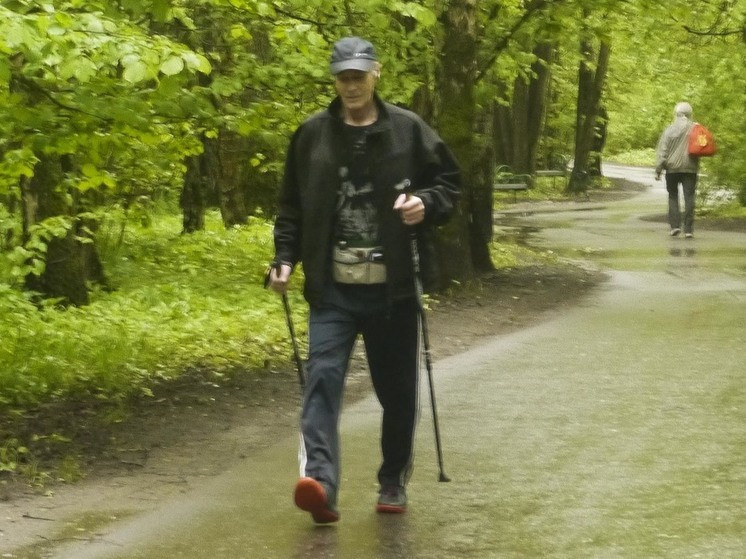American experts have given a number of tips for retro movement
A number of recent scientific studies have shown significant health benefits from walking backwards. In any gym, you can see someone walking backwards on a treadmill or pedaling backwards on an elliptical machine. While some may use reverse movements as part of a physical therapy regimen, others may do it to improve their fitness and overall health.

There has been quite a bit of research done on the potential benefits of retro-walking, a common term for walking backwards. According to a March 2021 study, participants who walked backwards on a treadmill for 30 minutes over four weeks improved their balance, walking pace and cardiopulmonary fitness, CNN reports.
Experts it is advised to do this slowly when people first start walking backwards. You can start by doing this for five minutes several times a week.
Additionally, a group of women reduced body fat and improved cardiorespiratory fitness after a six-week program of running backwards and walking, according to a clinical trial published in the April 2005 issue of the International Journal of Sports Medicine.
Other studies show that moving backwards can help people with knee osteoarthritis and chronic back pain, as well as improve gait and balance.
Walking backwards can even sharpen the mind and help one become more aware, as the brain needs to be more alert when moving in this new way. For this reason, plus the fact that walking backwards helps maintain balance, older adults may especially benefit from incorporating a few backward walks into their daily routine, according to one 2021 study of chronic stroke patients.
“I think it's amazing to add a little backward movement into your day,” says Grayson Wickham, a physical therapist at Lux Physical Therapy and Functional Medicine in New York City. “Today people sit too much, and they don’t have enough variety of movement.”
Why is backward movement so beneficial? “When you push yourself forward, it's a hamstring-dominant movement,” explains Landry Estes, a certified strength specialist in College Station, Texas. “If you're walking backwards, it's a role reversal where your quads are working and you're extending your knees.”
As a result, you train different muscles, which is always useful, plus you gain strength. “Strength overcomes many disadvantages,” Estes notes.
The person also moves their body in atypical ways. According to Wickham, most people spend their days living and moving in the sagittal plane (moving forward and backward), and almost exclusively in the straight sagittal plane.
“The body adapts to the positions, movements and poses that you perform most often,” says Wickham. – This can lead to muscle and joint tension, which leads to joint compensation, which leads to wear and tear on the joints, which then leads to pain and injury. The more we can diversify movements in our daily activities or in the gym, the better it is for the body.”
Retro movement is hardly a new idea, CNN emphasizes. People in China have walked backwards for centuries to maintain physical and mental health. Backward movement is also common in sports — think of football players and referees.
There are even some races that involve running backwards and walking, plus people run backwards in famous events like the Boston Marathon. Lauren Cytomerski did this in 2018 to raise money for epilepsy research and try to break the world record.
Getting started is pretty easy, says CNN. The main thing, as with any new exercise, is to perform it slowly. You can start by walking backwards for five minutes a few times a week, Wickham says. Or take a 20-minute walk, with five of those minutes walking in the opposite direction. Once your body gets used to the movement, you can increase the time and pace, or try more challenging movements, such as walking backwards in a squat.
“If you're younger and exercise regularly, you can probably walk backwards for as long as you want. as much as you want,” says Wickham. “It’s relatively safe in itself.”
Walking outdoors in a retro style is another option Wickham recommends. “Although the treadmill imitates walking, it is not as natural. Plus, you have the potential to fall. If you fall outside, it will be less dangerous.”
Some people try reverse pedaling on machines like the elliptical to improve their fitness and overall health.
If you prefer to retro-walk on a treadmill, especially a motorized one, start by grabbing the handrails and setting the speed to a fairly low speed, advises CNN. Once you get used to the movement, you'll be able to walk faster, increase the incline, and release the handrails.
If you decide to try this outside, first choose an area free of hazards, such as a grassy area in a park. Then begin your retro adventure by keeping your head and chest upright and rolling from your big toe to your heel.
Although you may have to look over your shoulder occasionally, you don't want to do it all the time, as it will deform your body. Another option is to take a walk with a friend who is moving forward and can serve as your eyes. After a few minutes, switch roles so your friend can also reap the benefits.
“It's so fun to do a variety of movements,” Wickham said. “And one of them is to do everything the other way around.”
And yes! CNN warns: Before starting any new exercise program, you should consult your doctor. And stop immediately if pain is felt.
























































Свежие комментарии